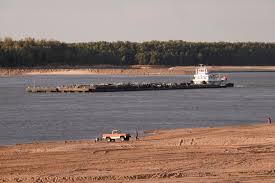
In 2023, the world experienced an alarming environmental crisis as rivers worldwide faced their driest year in over three decades, according to a United Nations report. The findings, which highlight the stark impact of climate change, are a wake-up call for urgent global action to address water scarcity and its severe effects on ecosystems, agriculture, and human life.
The UN Report: Key Findings
The United Nations World Water Development Report revealed that many of the world’s rivers experienced significantly lower water levels in 2023, marking the driest year in more than 30 years. The report examined water flow data from rivers in multiple regions across the globe, including Africa, Asia, Europe, and the Americas, showing a sharp decline in water volume. According to the report, these reductions were primarily driven by prolonged droughts, higher-than-average temperatures, and human activities such as over-extraction and deforestation.Regions Most Affected by DroughtSeveral regions were hit especially hard by drought in 2023. Rivers in Europe, including the Rhine and the Danube, saw historic lows, with water levels impacting shipping routes and hydroelectric power generation. In North America, the Colorado River, a critical source of water for millions, continued its decline, threatening water supply to states like California, Arizona, and Nevada. Africa’s Nile and Niger Rivers were also heavily affected, causing widespread agricultural losses and water shortages for millions of people.
Climate Change as the Main Culprit
Climate change played a critical role in exacerbating the drought conditions of 2023. The UN report pointed out that global temperatures have been rising steadily, resulting in altered precipitation patterns. Many regions experienced shorter, less intense rainy seasons, followed by prolonged dry spells. As global temperatures continue to rise, evaporation rates increase, further depleting river systems. The combination of heatwaves, changing weather patterns, and reduced rainfall created perfect conditions for drought, with rivers bearing the brunt of these changes.
Impact on Agriculture and Food Security
One of the most significant consequences of the dry rivers in 2023 was the toll on agriculture and food security. Rivers are a primary source of irrigation for farming, and their low water levels meant that many agricultural areas struggled to produce crops. In Africa and Asia, where millions depend on river-fed agriculture, this led to reduced harvests and rising food prices. Livestock farming also faced challenges, with animals lacking water sources for survival. As food security dwindled, communities in drought-affected regions faced hunger and economic instability.
Threats to Ecosystems and Biodiversity
The drying of rivers also had a devastating impact on ecosystems and biodiversity. Many rivers are home to unique species of fish, plants, and wildlife, which rely on consistent water flow for their survival. In 2023, low water levels led to habitat destruction, with many species unable to adapt to the changing conditions. The loss of wetlands, which act as vital ecosystems, further exacerbated the problem. In some areas, invasive species, more tolerant of dry conditions, began to dominate, causing further disruptions to the natural balance.Economic ConsequencesThe economic impact of dry rivers in 2023 was immense. Hydroelectric power plants, which depend on strong river flows to generate electricity, faced reduced output, leading to power shortages in several countries. Industries that rely on water, such as manufacturing and food processing, also faced challenges. In Europe and North America, low water levels in key rivers disrupted trade routes, with shipping vessels unable to navigate through shallower waters, causing delays and economic losses.
Humanitarian Impact: Water Scarcity and Migration
The humanitarian implications of the drought were severe. Water scarcity led to drinking water shortages in many regions, especially in developing countries. Communities dependent on rivers for their water supply were forced to migrate in search of new water sources. The UN report highlighted an increase in migration due to drought, as people from rural areas moved to urban centers, increasing pressure on already scarce resources. This mass movement of people has created a complex web of social and economic challenges, particularly in developing countries.
Urgent Global Action Needed
The UN report underscored the urgent need for global cooperation to combat the water crisis. It called for countries to prioritize sustainable water management practices and reduce greenhouse gas emissions to mitigate the effects of climate change. The report also highlighted the importance of investing in technology and infrastructure that can help conserve water, such as efficient irrigation systems and water recycling facilities. Governments were urged to take immediate steps to strengthen drought preparedness, improve early warning systems, and provide support to vulnerable communities.
The drying of the world’s rivers in 2023 is a stark reminder of the devastating impacts of climate change and the need for swift global action. The water crisis is not only a threat to ecosystems but also to food security, economies, and human lives. Without urgent intervention, the situation is likely to worsen in the coming years, leaving millions more vulnerable to water shortages and economic instability. Addressing the root causes of the crisis, particularly climate change, will be essential to securing a sustainable future for both the planet and humanity.
Subscribe to Follow Global Trends for daily global news.
Find Out How To Make Money As A Full Time Writer/Blogger Guide.
To Advertise, Advertise Your Affiliate Links on FollowGlobalTrends.com for Just $1 Per Link Per Month!
Related Articles
Written By: Enyoghasi Ngozi pricillia
,

